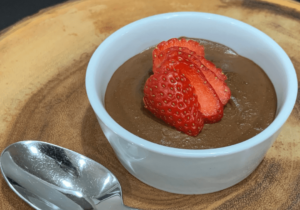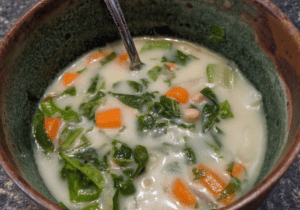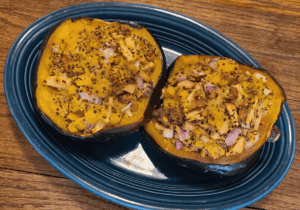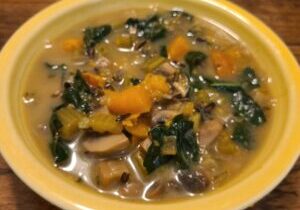Plant Based Eaters: Helpful Tips To Transform Your Body with Hand Portion Control
Food tracking is very common for people who have body transformation goals, and a lot of questions come up when it comes to plant based foods. Weighing and measuring can be tedious, so let's look at a modified approach to hand portion control method with tips specific to plant based eaters.
Hand Portion Control: Why use hands as a guide?
While using phone apps is the most common method, counting calories, weighing food, or calculating grams to track macros is not appealing to everyone and, in some cases, can lead people to obsess about food.
There are different reasons why you may choose to use hands as your guide, but the main reason is that you always have hands with you, so you can quickly track how much you are eating anywhere you go without pulling out your phone at a dinner table to find out the macros quickly.
Using hand measurement for food can help people who tend to obsess about every gram of food. Sometimes it even makes them more precise. For example, do you remember when you used a spoon to get peanut butter out of a jar, weighed it, and then tracked what you wished it was instead of what it really was? Some people are more honest with tracking food when they don’t see calories.
Hand portion control can be a valuable way to stay on track while avoiding micromanaging macros or calories. I am a prime example of such a person - with my dieting history, I tend to aim for low calories when I see numbers.
How to use your hand to track food
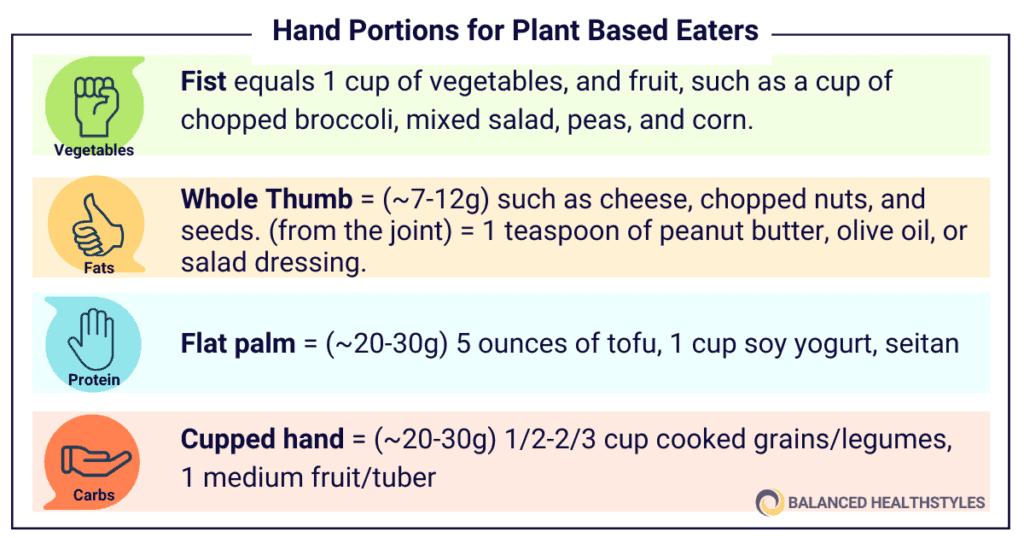
- Fist = 1 cup of vegetables, and fruit, such as a cup of chopped broccoli, mixed salad, peas, and corn.
- Thumb tip (from the joint) = 1 teaspoon of peanut butter, olive oil, or salad dressing.
- Whole thumb = (~7-12g) such as cheese, chopped nuts, and seeds.
- Flat palm = (~20-30g) 5 ounces of tofu, 1 cup soy yogurt, seitan
- Cupped hand = (~20-30g) ~1/2-2/3 cup cooked grains/legumes, 1 medium fruit/tuber
While it is easy to use the palm of your hand to measure a block of tofu, many traditional meals using tofu don't serve the whole block on the plate like a piece of steak, and meals like chili sin carne or dhals have all the ingredients mixed together, which makes it problematic to track (not only when using hand portions)
Plant based meals can be challenging to track using your hands, especially if you care about monitoring specific macros, namely protein. However, it can be relatively simple, but first, you need to change how you think about macros.
Hand Portions vs tracking macros: A new way to think about a vegan diet
The hand portion system assumes people will eat a mixed intake of protein, veggies, carbs, and fats. And these food sources will have varying amounts of each macro. If you eat macro-friendly foods (foods consisting predominantly of one macronutrient with a minimal amount of other macros), you will be more precise in hitting specific macros. But if your primary concern is controlling the number of calories you eat, you will have more wiggle room.
Beans and legumes
A common problem for people following a vegan diet is tracking beans & legumes.
Are they a carb source? A protein? Do I use a palm or a cupped hand?
If we look at the macronutrient composition of beans and legumes, they contain a substantial amount of starch - three times as much starch as protein, to be precise. If you compare them to chicken breasts or even tofu, you will quickly find that calories and macros don't add up.
Hand portions can still be used - with a little tweak
What I found to work best when measuring beans and lentils is to use a cupped hand as a measurement. It seems to fit the best considering the amount of water cooked legumes contain, so they have more volume than tofu, seitan, or chicken breasts.

The process
The process I used to move away from macro counting to measuring beans and legumes with a cupped hand.
For a few days, I used food scales to train my eye.
- I estimated a handful of cooked legumes and weighed them. (Over time, I tried it with different beans and lentils, and I found that cooked weight makes almost always 2.5x their dry weight.)
- I found that my handful of chickpeas is almost always ~125g, approximately 45g of dry chickpeas (~165kcal, 27g C, 9g P, 2g F). This does not fit the traditional hand portion measurements, that account for ~120kcal per portion of fat, protein, and carbohydrate sources.
- Knowing that my cupped hand of cooked legumes is ~125g (175kcal), I count it as 0.5 portion protein, 1 portion of carbohydrates.
Alternatively, a cup of cooked whole chickpeas is about 150g. Just like hand portions, cups measure volume. You would need to adjust the numbers.
Great! We have the volume equated, but what about the macros?
Traditionally, you might have chicken, rice, and Broccoli. You can easily estimate a palm of protein (chicken breast), a handful of carbs (rice), and a fistful of vegetables (Broccoli).
But what if you have beans, rice, and broccoli?
- A fistful of Broccoli is a portion of vegetables.
- A cupped hand of rice is a portion of carbs.
- A cupped hand of beans is a portion of carbs? Protein?
If you have done the previously outlined experiment, use the numbers you have arrived at. Otherwise, I count legumes as 1/4 of protein and 3/4 of carbs. (Beans and legumes typically contain about 20g protein and 60g carbs per 100g)
So if you want to get a whole serving of protein with beans alone, you must use 4 cupped hands.
That leaves us with a practical consideration of making this meal more protein rich without consuming three times as many calories.
There are several options:
1. Substitute a part of a pure carb for a rich protein source in the meal. This way, you skew protein percentage towards protein.
2. Use beans as carbs and protein - don't combine them with other pure starch/carbs. So no beans and rice but beans only. Ex. Hummus with veggies without pita bread. It might sound scary initially, but it can work for your taste buds.
What about mixed meals such as chili or dhals?
The problem with mixed meals is typical for Indian dishes, hummus, and stews. It is almost impossible to track those using hand portions when eating out.
But if you are preparing meals yourself and know what food and quantities you put into your meals, I suggest you use a method, or a combination of techniques, that work for you.
Example:
- Weigh food before cooking, note the recipe, and calculate the meal's calories. Use the food scale to track calories/macros based on the recipe based on weight. Use hand portions for meals that are easier to track.
- Weigh food before cooking, note the recipe, and work out the total calories/macros of the meal. Then, measure the number of cups (or handfuls) the whole meal is and divide the total calories/macros by the number of cups/hand portions.
Example meal:
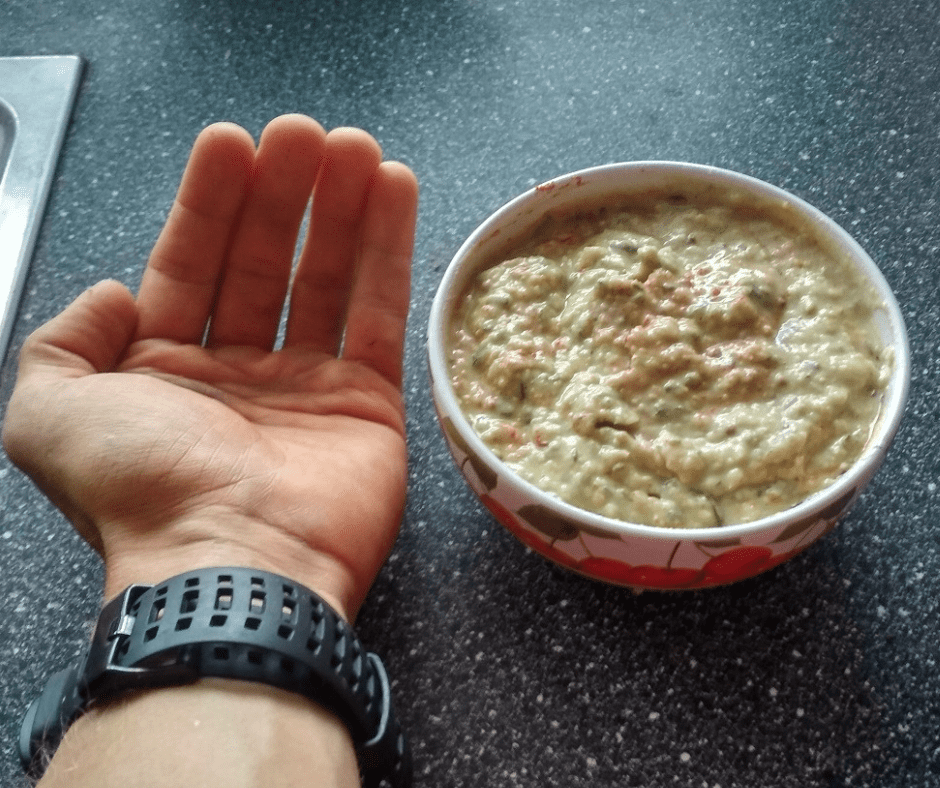
2 cupped hands of legumes (blended chickpeas) ~ 1P 2C (according to my measurements outlined above)

A portion of tempeh- Protein source. 1P
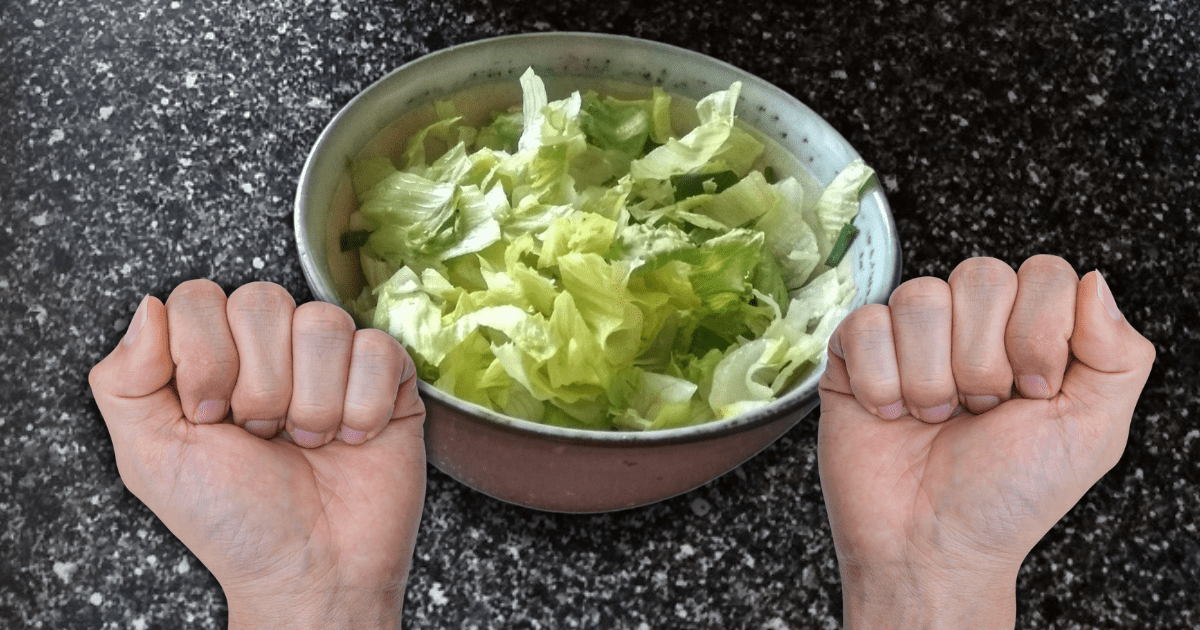
One portion of leafy vegetables is a double fist size - 1 V

Two portions of healthy fats - 2F
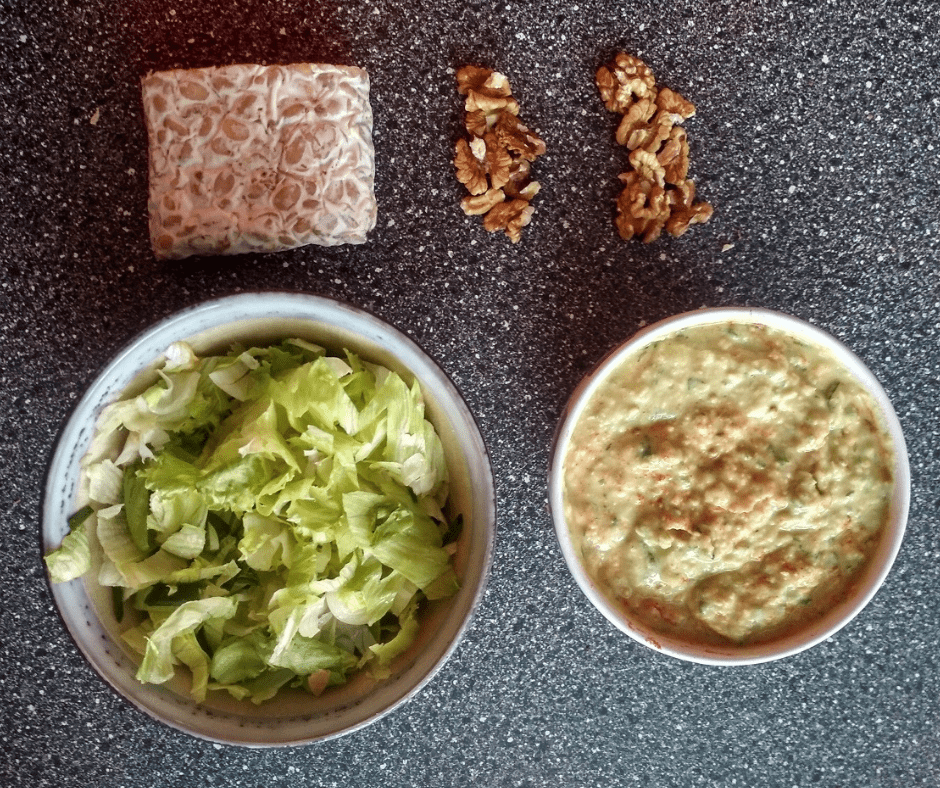
Whole meal - 2.5P, 2C, 2F, 1V
Here are the key points
Keep it simple!
1. Substitute a part of a pure carb for a rich protein source in the meal.
This way, you skew protein percentage towards protein.
Use hand portion control to be consistent. Consistency beats precision most of the time.
You don't need to know the exact number of calories you consume. When measuring food with hands, you are interested in being consistent and deciding whether to eat more or less.
Hands as a measurement tool can be used to help you stay consistent.
Do you eat 5 portions of carbs a day, 2 portions of protein, 5 portions of fat?
If you want to reduce your intake in one of the hand portion categories, remove a portion of carbs or fat for example. If you want to consume more, add a portion of any. It can be as simple as that!
2. I invite you to use hand portions as an educational tool to build a healthy plate.
Mind the amount of food you eat and the proportion of macronutrients.
3. Don't get bogged down trying to make it perfect
It’s common for people try to be 'precise' with hand portions, and if their portions don't exactly match the weighed food, they feel anxious. It should not make your life harder, but easier. Use whatever method that makes it easy for you to stay on track.
If you feel you need more guidance using hand portions for your plant based diet, search for coaches who can help using our coach directory or leave a comment below this article.
When it comes to what to eat to help your reach your health and body goals, there are a lot of options out there. What’s most important is figuring out what works best for you.
Daniel Weiss is a nutrition and lifestyle coach guiding athletes of all levels. Find other articles written by Daniel on his coach profile, and connect on social media for challenges to support your nutrition, training, & supercharge your recovery to achieve your personal best.





